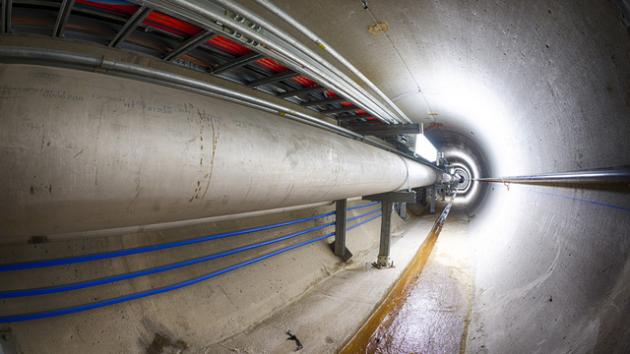Fermilab Will Fire Neutrinos Through The Earth's Crust To Understand It Better
Sep 25, 2013 19:12

The Department of Energy's Fermilab in Batavia, IL aims to unlock the secrets of electrically neutral subatomic entities. How so? They want to blast them through hundreds of miles of the Earth's crusts. That doesn't sound...safe?
Fermilab's accelerator complex took 15 months for an upgrade so that it could handle the massive 700 kilowatts of power needed for its NuMI Off-Axis Neutrino Appearance Experiment (NOvA).
The experiment will fire the world's most concentrated neutrino beam from the Fermilab through the Earth to a 14,000 particle detector located in Ash River, Minesota.
The trip is expected to take 3 milliseconds, and researchers are expecting to find mostly muon neutrinos at the start of the beam.
Since they can't expect to track and study individual neutrinos, scientists will employ statistical models to determine how many(or even if any) of the neutrinos decayed into a different form.
Per the Fermilab website,
The detectors are made up of 344,000 cells of extruded, highly reflective plastic PVC filled with liquid scintillator. Each cell in the far detector measures 3.9 cm wide, 6.0 cm deep and 15.5 meters long. When a neutrino strikes an atom in the liquid scintillator, it releases a burst of charged particles. As these particles come to rest in the detector, their energy is collected using wavelength-shifting fibers connected to photo-detectors. Using the pattern of light seen by the photo-detectors, scientists can determine what kind of neutrino caused the interaction and what its energy was.

Researchers hope to understand the intrinsic abilities and characteristics of these particles. Read more from here: [Fermilab - MINOS - Symmetry Mag - Wiki - Images: Fermilab]







































































